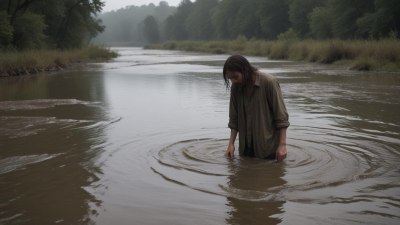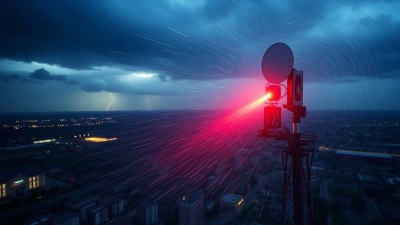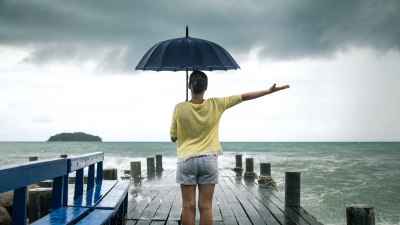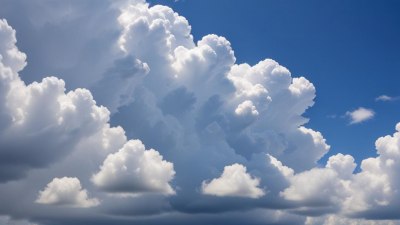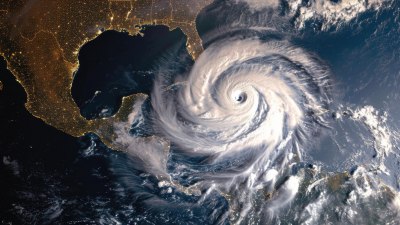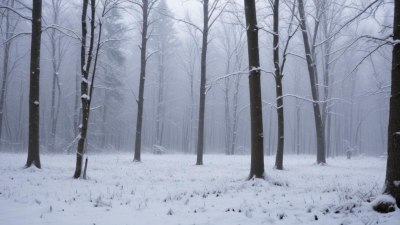Why Local Wind Patterns Shift in the Evening
Explore why local wind patterns shift during the evening due to temperature, pressure changes, and geographical factors.
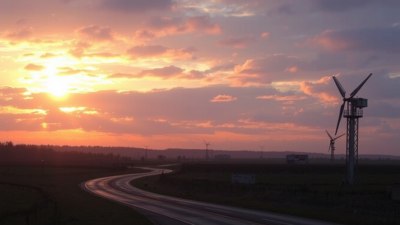
Image created with Flux Schnell
Understanding why local wind patterns shift in the evening involves grasping some fundamental principles of meteorology and the interplay between temperature, pressure, and geography. The transition from day to night triggers changes in the atmosphere that directly affect wind behavior on a local scale.
During the day, the sun heats the Earth's surface unevenly, causing variations in air temperature. Warmer surfaces create areas of lower pressure as the air rises, while cooler areas retain higher pressure. This pressure difference sets winds in motion as air moves from high-pressure zones to low-pressure ones.
As evening approaches and the sun sets, the Earth's surface begins to cool. This cooling is more rapid over land than over bodies of water due to differences in heat capacity. Consequently, thermal gradients shift, causing the atmospheric pressure distribution—and therefore local wind patterns—to change.
Daytime Heating and Its Effect on Wind
During daylight hours, solar radiation warms the Earth's surface unevenly depending on terrain type, angle of sunlight, and surface albedo. Areas such as urban regions, rocky landscapes, or bare soil heat up faster compared to forests, water bodies, or shaded areas.
This uneven warming causes localized pockets of warm air to rise, decreasing the atmospheric pressure in these zones. Surrounding cooler air at higher pressure moves in to replace the rising warm air, generating winds. These daytime winds are often characterized by their direction toward the region of heating and increased intensity.
An example is the sea breeze, which forms during the day when coastal lands warm faster than the adjacent ocean. Warm air over land rises, creating a low-pressure area, and cooler ocean air flows inland to replace it. This breeze typically begins mid-morning and strengthens throughout the afternoon.
The Transition to Evening: Surface Cooling
When the sun sets, the lack of incoming solar energy causes the Earth's surface temperature to decline. This cooling effect is more pronounced on land due to its lower heat capacity compared to water. As land cools, the air in contact with the surface also loses heat, becoming denser and heavier, which increases the pressure over land areas relative to adjacent bodies of water.
Because the air over the land is now cooler and denser, the pressure gradient reverses from daytime patterns. This reversal causes winds to change direction, often flowing from the land toward the water. Such winds are called land breezes and typically peak during the night and early morning hours.
Pressure Gradient and Wind Direction Changes
The fundamental driver of wind is the pressure gradient force—the movement of air from areas of higher to lower atmospheric pressure. During the day, lower pressure over warmer land surfaces causes air to flow inland from the sea or cooler adjacent areas.
In the evening, as land cools more rapidly than water, the pressure gradient reverses. Higher pressure over the cooler land pushes air out toward the warmer, lower-pressure water, shifting the wind direction. This change not only alters local wind patterns but also affects temperature and humidity distribution in the vicinity.
Thermal Inertia and Its Role in Wind Pattern Shifts
Thermal inertia describes the ability of a material to resist temperature changes. Water has a higher thermal inertia than land, meaning it heats up and cools down more slowly. This property is crucial for understanding why land and sea temperatures diverge at day’s end, contributing to wind shifts.
While land temperatures can drop significantly within a few hours after sunset, nearby water bodies retain warmth longer, maintaining lower pressure compared to the cooling land. This delayed cooling in water sustains a pressure difference that drives land breezes during the night until the temperature gradient equalizes or reverses at dawn.
Topographic Influences on Evening Wind Shifts
Local geography significantly influences wind patterns and their evening shifts. Mountains, valleys, and bodies of water create unique microclimates that affect temperature and pressure distributions.
Valleys often experience temperature inversions during the evening, where cooler air settles near the surface as warmer air rises above. This inversion can cause down-slope winds known as katabatic winds, where cooler, denser air flows down valley slopes after sunset, further modifying local wind patterns.
Conversely, during the day, up-slope winds called anabatic winds occur when warm air rises along slopes. The evening shift from anabatic to katabatic winds marks a significant change in local wind direction and intensity.
Urban Heat Islands and Evening Wind Behavior
Urban environments can alter the typical evening wind pattern shifts due to the urban heat island effect. Cities tend to retain heat longer than surrounding rural areas because of concrete, asphalt, and reduced vegetation, causing slower cooling after sunset.
This retention sometimes weakens or delays the formation of land breezes near cities, as the temperature and pressure gradients do not reverse as quickly as in less developed areas. Consequently, urban wind patterns can remain different during the evening compared to rural settings, affecting air quality and local climate.
The Role of Atmospheric Stability
Atmospheric stability refers to the tendency of the atmosphere to resist or enhance vertical motion. During the day, solar heating promotes instability as warm air rises vigorously, contributing to turbulent winds and convective mixing.
In the evening, cooling stabilizes the lower atmosphere, suppressing vertical air movement. Stable conditions favor a more laminar flow and enable wind direction shifts to become more pronounced and persistent near the surface. This stability often leads to calmer winds with distinct directional changes, especially in sheltered areas.
Impact on Local Weather and Human Activities
The shifts in local wind patterns during the evening have practical implications. For instance, changes in wind direction influence temperature and humidity distribution, which affect comfort levels and local weather conditions.
Evening wind shifts also impact air pollution dispersion in urban environments, as different wind directions can carry pollutants toward or away from populated areas. Understanding these shifts aids in planning outdoor activities, agriculture, and energy management, such as optimizing wind turbine usage or controlling smoke from fires.
Local wind patterns shift in the evening primarily due to changes in temperature and pressure distributions as the Earth's surface cools after sunset. The faster cooling of land compared to water reverses typical daytime pressure gradients, causing winds to change direction—from onshore sea breezes to offshore land breezes. Geographic features, urban heat islands, thermal inertia, and atmospheric stability also modulate these shifts, creating complex and diverse local wind behaviors.
Recognizing these patterns helps meteorologists and residents predict weather changes, manage resources, and understand atmospheric dynamics in their local environment.
